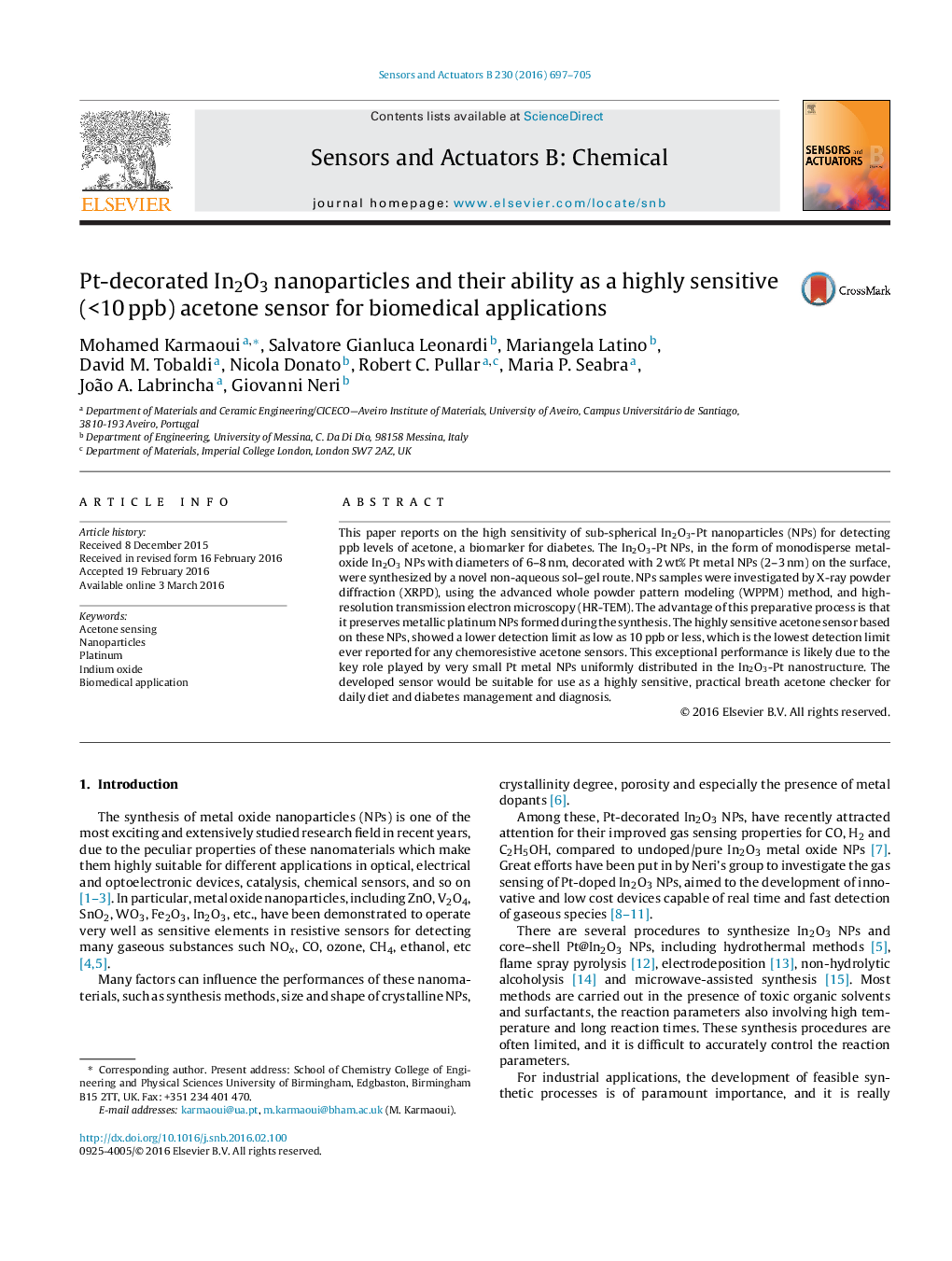| کد مقاله | کد نشریه | سال انتشار | مقاله انگلیسی | نسخه تمام متن |
|---|---|---|---|---|
| 741363 | 1462061 | 2016 | 9 صفحه PDF | دانلود رایگان |

This paper reports on the high sensitivity of sub-spherical In2O3-Pt nanoparticles (NPs) for detecting ppb levels of acetone, a biomarker for diabetes. The In2O3-Pt NPs, in the form of monodisperse metal-oxide In2O3 NPs with diameters of 6–8 nm, decorated with 2 wt% Pt metal NPs (2–3 nm) on the surface, were synthesized by a novel non-aqueous sol–gel route. NPs samples were investigated by X-ray powder diffraction (XRPD), using the advanced whole powder pattern modeling (WPPM) method, and high-resolution transmission electron microscopy (HR-TEM). The advantage of this preparative process is that it preserves metallic platinum NPs formed during the synthesis. The highly sensitive acetone sensor based on these NPs, showed a lower detection limit as low as 10 ppb or less, which is the lowest detection limit ever reported for any chemoresistive acetone sensors. This exceptional performance is likely due to the key role played by very small Pt metal NPs uniformly distributed in the In2O3-Pt nanostructure. The developed sensor would be suitable for use as a highly sensitive, practical breath acetone checker for daily diet and diabetes management and diagnosis.
Journal: Sensors and Actuators B: Chemical - Volume 230, July 2016, Pages 697–705